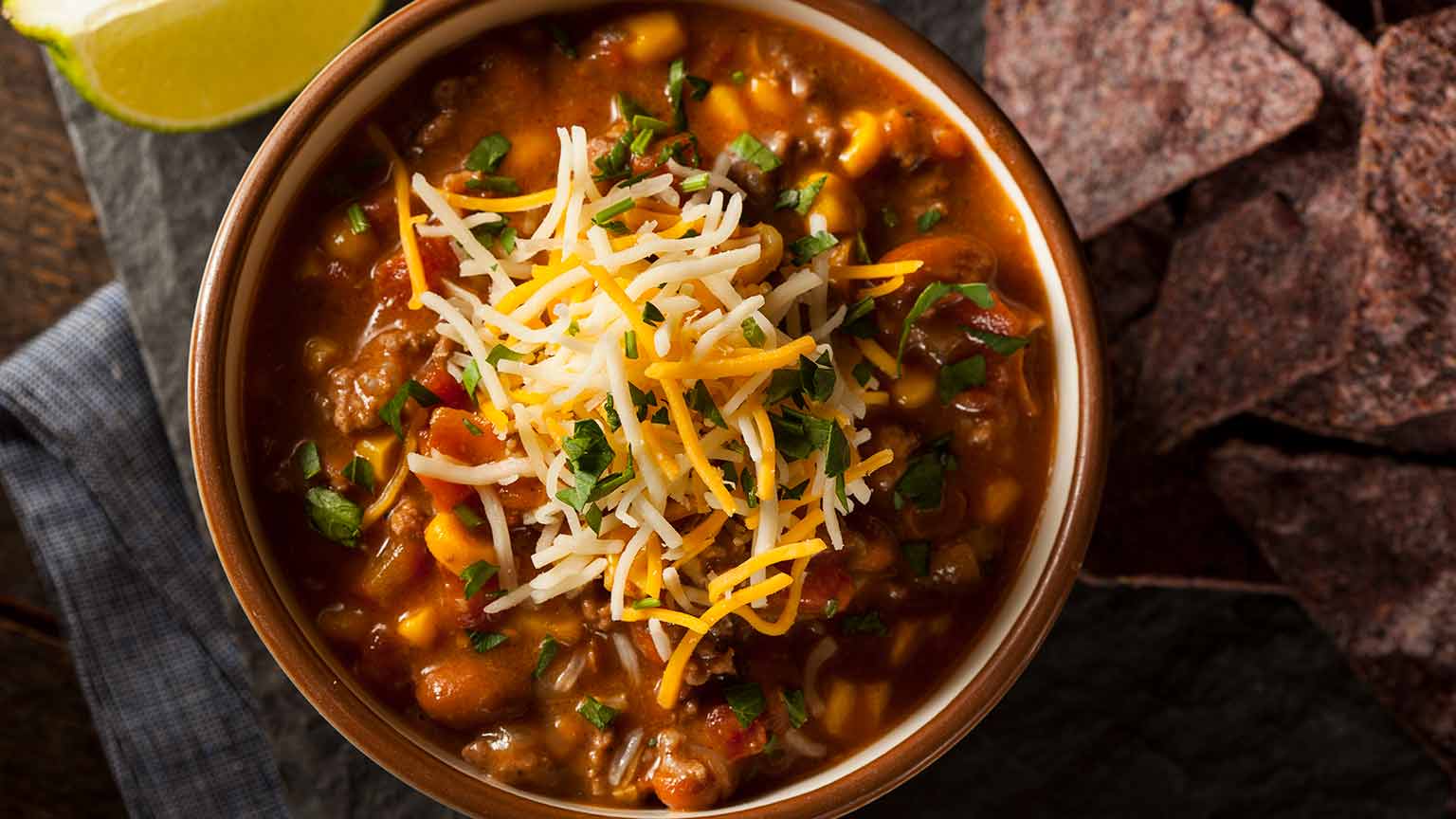Chili

"Chili concocted outside of Texas is usually a weak, apologetic imitation of the real thing.”
— Lyndon B. Johnson, 36th President of the United States
“As soon as I separated the dish from its supposed Texas brethren, I was able to see that Cincinnati chili was totally unique, and madly delicious.”
— Nick Kindelsperger, The Paupered Chef
Chili. There are few foods in America more personal, more divisive, and more heavily imbued with regional pride. And in two U.S. locales — Texas and Ohio (Cincinnati, to be exact) — it’s practically a religion. It will not surprise you to learn that the chili culture, not to mention the chili itself, differs greatly between them. How and why? Let’s start with…
Texas. Chili has been the official “State Dish” since 1977, when the Texas legislature resolved that “one cannot be a true son or daughter of this state without having his [or her] taste buds tingle at the thought of the treat that is real, honest-to-goodness, unadulterated Texas chili."
There are conflicting stories about how Texas-style chili originated. Surprisingly, it’s not of Mexican origin, but was brought by immigrants in the 1700s from the Canary Islands, which were then under Spanish rule. The stew, with its unique combination of spices, was perfected in what is now San Antonio by “chili queens” in local “chili parlors” or “chili joints.” There is also a more fanciful story — that chili was invented in the 1600s by a mysterious nun known as “the lady in blue” who was somehow able to appear simultaneously in her native Spain and in the American Southwest to preach about religion, God, baptism, and…how to make a “fiery stew.”
Whichever version you believe, chili became a mainstay with cowboys, gold prospectors, trailblazers, and anyone who camped out a lot. Its ingredients — chili peppers, dried beef, salt, pepper, and lard — could be formed into a portable “brick” that could later be combined with a little water and cooked over a campfire. That was how “brick chili” spread beyond Texas to the plains, but its national popularity can be traced back to an event from which so many of our essential foods came: the 1893 Columbian Exposition in Chicago, where an emporium called the San Antonio Chili Stand caught on with fairgoers.
One other constituency had a big affinity for chili — Texas prison inmates, for whom this dish was known as “prisoner’s plight.” It is said that Texas prison chili was so good that convicts rated institutions by its quality, and frequently requested the recipes after they were released.
The 1894 invention of chili powder proved to be a game-changer, because now chili could be made by any home cook with a spice rack. Fun fact: President Lyndon Johnson loved chili so much that his wife Lady Bird happily shared her famous chili recipe with anyone who asked. And just as the inclusion of a cookie recipe on Nestle’s Chocolate Chips bags was a boon for home bakers, chili got a giant shot in its proverbial arm from the Frito-Lay Company, when “Frito Pie” made its first appearance on Fritos Corn Chips bags in 1962. The convenience of this “snack on the go” — hot chili ladled into an open bag of corn chips and topped with chopped onions and grated cheese — made it a huge hit. (But not, famously, with Anthony Bourdain, although he later apologized.)
Characteristics of Texas chili vary, but there is one constant: NO BEANS — the presence of them in a bowl of chili will be greeted with contempt by Texans. However, this is far from true for the thousands of chili fanatics in…
Cincinnati. You can’t really claim to have visited (much less lived in) The Queen City without experiencing “Cincinnati chili.” And the city makes it easy, as there are more than 250 chili parlors serving up something entirely different from Texas chili — perhaps because of its origins, which are…Macedonian! In 1922, Tom and John Kiradijeff, two brothers who had emigrated from that country, opened The Empress, a modest-sized Greek restaurant in Cincinnati. Business was mediocre, so they added “chili spaghetti” to the menu. Soon, they found themselves at the helm of the successful Empress Chili chain, which offered a slightly thinner version of chili, in which the meat was cooked and spiced differently — with cinnamon, allspice, and Worcestershire sauce, among others (but NOT chocolate as has been rumored) — and served atop a mound of pasta.
Chili is now synonymous with Cincinnati, and has its own lexicon. When ordering chili there, you will need to specify which “way” you want it. A glossary of terms:
- Two-Way: Chili Spaghetti
- Three-Way: Chili Spaghetti with Cheddar cheese
- Four-Way: Chili Spaghetti with Cheddar cheese, beans, OR onions
- Five-Way: Chili Spaghetti with Cheddar cheese, beans, AND onions
So, Texas chili and Cincinnati chili are like apples and oranges, really. It’s best to adopt a “when in Rome, do as the Romans do” philosophy when it comes to the rivalry surrounding this dish. The chili you get will depend upon where you are — beans or no beans, pasta or no pasta — and it’s all good!





